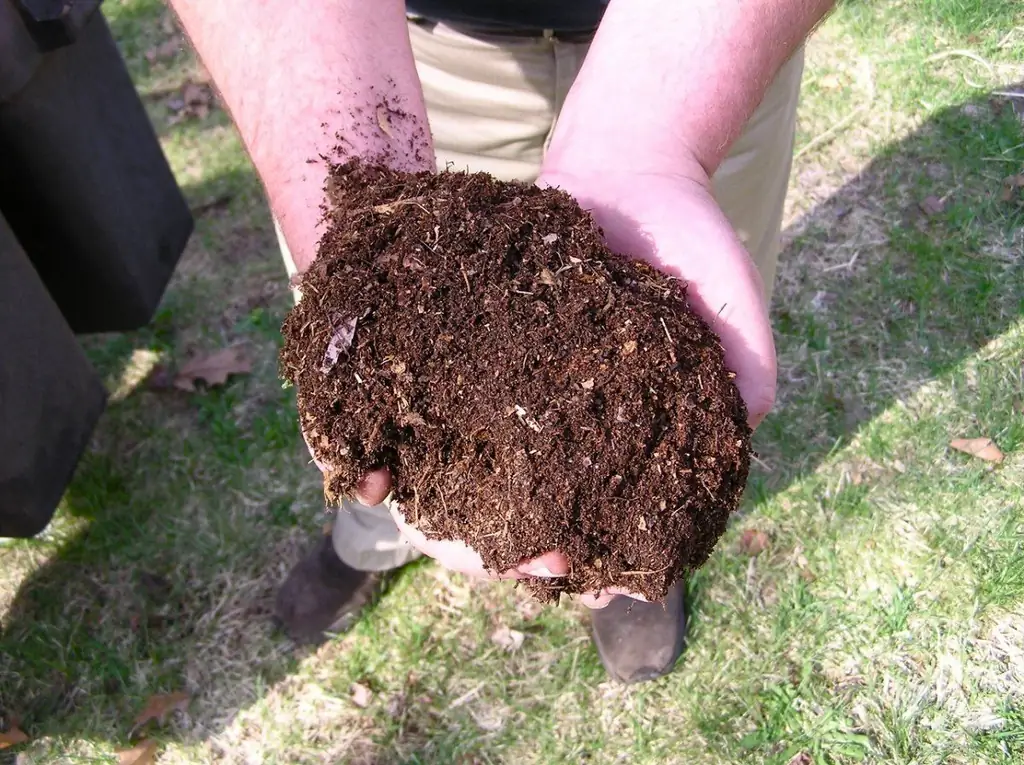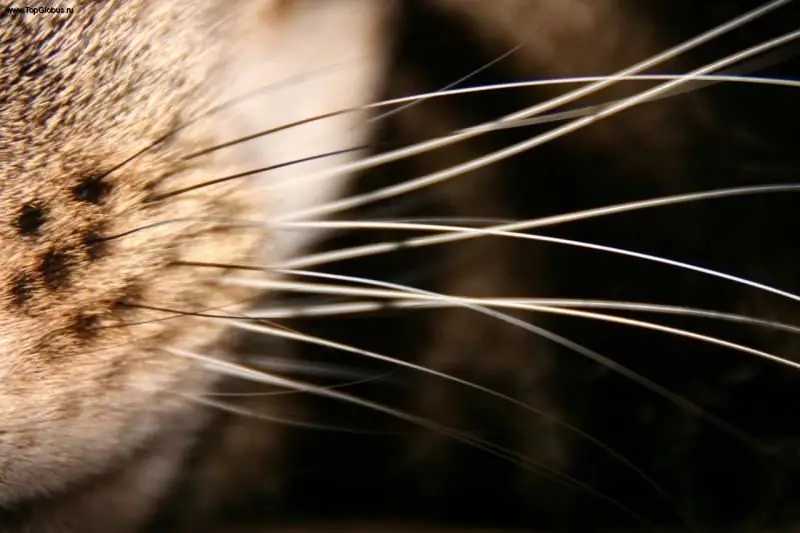
Table of contents:
- Author Bailey Albertson [email protected].
- Public 2023-12-17 12:53.
- Last modified 2025-06-01 07:32.
How to feed onions so that they are large

To get a good harvest of onions, it is not enough just to plant them and water them regularly. Only timely application of dressings will allow the bulbs to grow large and be stored for a long time in winter.
Suitable for onion feeding
Onions are considered a culture that is unpretentious and undemanding to the composition of the soil on which it grows. But even he needs sufficient nutrition, which is necessary not only for the growing season, but also for the formation of fruits. During the growing season, it is recommended to feed the onion several times:
- Approximately 15-20 days after planting, the onion beds are fed mainly with nitrogen-containing fertilizers, which are needed by plants to grow green ground mass.
- After 3-4 weeks, fertilizing is repeated, but it should already contain less nitrogen. Additionally, phosphorus-potassium compositions are introduced.
- In the third top dressing, potash fertilizers should prevail, it is they that affect the weight gain of the vegetable. The last time the nutrient compositions are introduced when the onion begins to form intensively and reaches 2-3 cm.

Onions must be fertilized at least three times.
You can use a variety of types of fertilizers (organic and mineral), as well as time-tested folk remedies.
Mineral fertilizers
For the very first early spring feeding of onion plantings, use:
- urea - 20-25 g per 10 liters of water;
- ammonium nitrate - 10-15 g per bucket;
-
composition of (per 10 l):
- superphosphate - 25-30 g;
- ammonium nitrate - 15-20;
- potassium chloride - 10-12 g;
- ready-made mineral complexes (Vegeta, Ideal, etc.), they are used according to the instructions.
You can re-fertilize onion shoots using:
- complex mixtures for onions and garlic (Fasco, Biomaster, Agros, etc.), the solution is diluted strictly according to the instructions;
- nitrophosphate - 30 g per bucket;
-
mixture (per 10 l) of:
- superphosphate - 60 g;
- potassium chloride - 30 g.
The last time the onion is fed:
- superphosphate - 30 g and potassium sulfate - 30 g per 10 liters;
- potassium monophosphate - 45-50 g per bucket;
- phosphorus-potassium mixture - 35-40 g per 10 liters.
All granules must be dissolved in water, then abundantly pour the onion beds with the resulting solution. The liquid consumption is approximately 2.5-3 liters per 1 m 2. It is extremely important not to exceed dosages, as nitrogenous fertilizers accumulate in the soil in the form of nitrates.

It is better to dilute mineral fertilizers in water first, and then water the beds with onions
Organic fertilizers
Many gardeners prefer to use purely organic formulations.
As the first nitrogen feeding, you can use:
- slurry - for 10-12 liters of water 1 glass of fresh mullein (consumption 2-3 liters per m 2);
- infusion of chicken manure - in a ratio of 1:20 (for 1 m 2 to 1 liter of solution);
- store-bought organic compounds (Effekton-O, Agricola No. 2, etc.), they are bred according to the instructions.
During the period of active growth, onion beds are fertilized:
- herbal infusion - 1 kg of grass per 10 liters of water is insisted for 5-6 days, diluted in half (10 liters for 2-3 m 2);
- humic fertilizers (Gumi-Omi, etc.).
At the final third feeding, use:
- ash solution - 200 g per bucket of water (5-6 l per 1 m 2);
- humus (compost) - 1 bucket per 1 m 2;
- Effekton-O and other similar organic complexes.

Fertilizer ash can be scattered on the ground
I prefer to use only organic matter in my garden. I keep a barrel of grass soaked in it at the ready. At the right time, I take a working solution from there, dilute it with water and water the beds. But it should be remembered that such a fertilizer contains a lot of nitrogen, therefore it is recommended to use it in the first half of the growing season.
Folk remedies
Traditional folk methods of feeding onion crops have not lost their relevance to this day. For the first time, onions that have risen are fertilized with ammonia, which is also a source of nitrogen. Along the way, this pharmaceutical preparation fights against various insect pests (weevil, onion fly, etc.), which do not tolerate its pungent odor. In a bucket of water, dilute 30 ml of ammonia (two tablespoons), then water the beds with onions, spending about 3-4 liters for each m 2.

Ordinary pharmacy ammonia is an excellent nitrogen fertilizer
For subsequent dressings use:
- A mixture of yeast and wood ash - 100 g of fresh yeast, 20 g of granulated sugar and 200 g of crushed ash are poured with a bucket of warm water, infused for a day, then the onion is watered (consumption is 2-3 liters per m 2).
- Infusion of fresh green grass, bread crumb and raw yeast, taken in equal amounts (0.5 kg each) per 10 liters of water. The agent is insisted for 2-3 days. They are used for irrigation, consumption is 3-4 liters per 1 m 2.
- Dry yeast (10 g) and 20 g of sugar are poured with a bucket of water, kept for 2-3 hours, then diluted in a ratio of 1: 5 and the beds are watered (3-4 liters per 1 m 2).
Before applying any dressing, you must loosen the ground between the rows of onions with a hoe or hoe. Working solutions are advised to be poured into the aisles to prevent accidental leaf burns. It is better to do this early in the morning or at sunset, in dry and calm weather.
Video: feeding for onions
Accurate adherence to the fertilizing schedule, as well as competent agricultural technology, will be the key to obtaining large, full-weight bulbs. The greatest effect can be achieved with a balanced combination of mineral and organic supplements.
Recommended:
Description Of Organic Fertilizers And Their Use (with Video)

Types of organic fertilizers, practical recommendations for the production and use of compost and other fertilizers
Interesting Facts About Cats And Cats: What Taste They Don't Feel, Do They Sweat, Do They Understand Human Speech And Answers To Other Questions

How cats differ from humans. How cats feel, hear, see, remember. Their relationship to the game. What does purr and tail wagging mean. Reviews
Fertilizers For Potatoes When Planting: Which Are Better, Including Mineral And Organic

Do I need to feed the potatoes at all. What fertilizers are put into the hole when planting: types and dosage. Gardeners' reviews about the tools used, recommendations
Whiskers In Cats And Cats: What Are They Called Correctly And Why They Are Needed, What Will Happen If You Cut Them And Why They Fall Out Or Become Brittle

Features of the structure of the mustache in cats. What are they called and where they are located. What functions do they perform. What problems can a cat with a mustache have? Reviews
How To Feed Peppers During Flowering And Fruiting: Mineral, Organic And Folk Remedies

Top dressing suitable for pepper: mineral and organic fertilizers, folk remedies - description, frequency of application. Reviews and recommendations of gardeners
